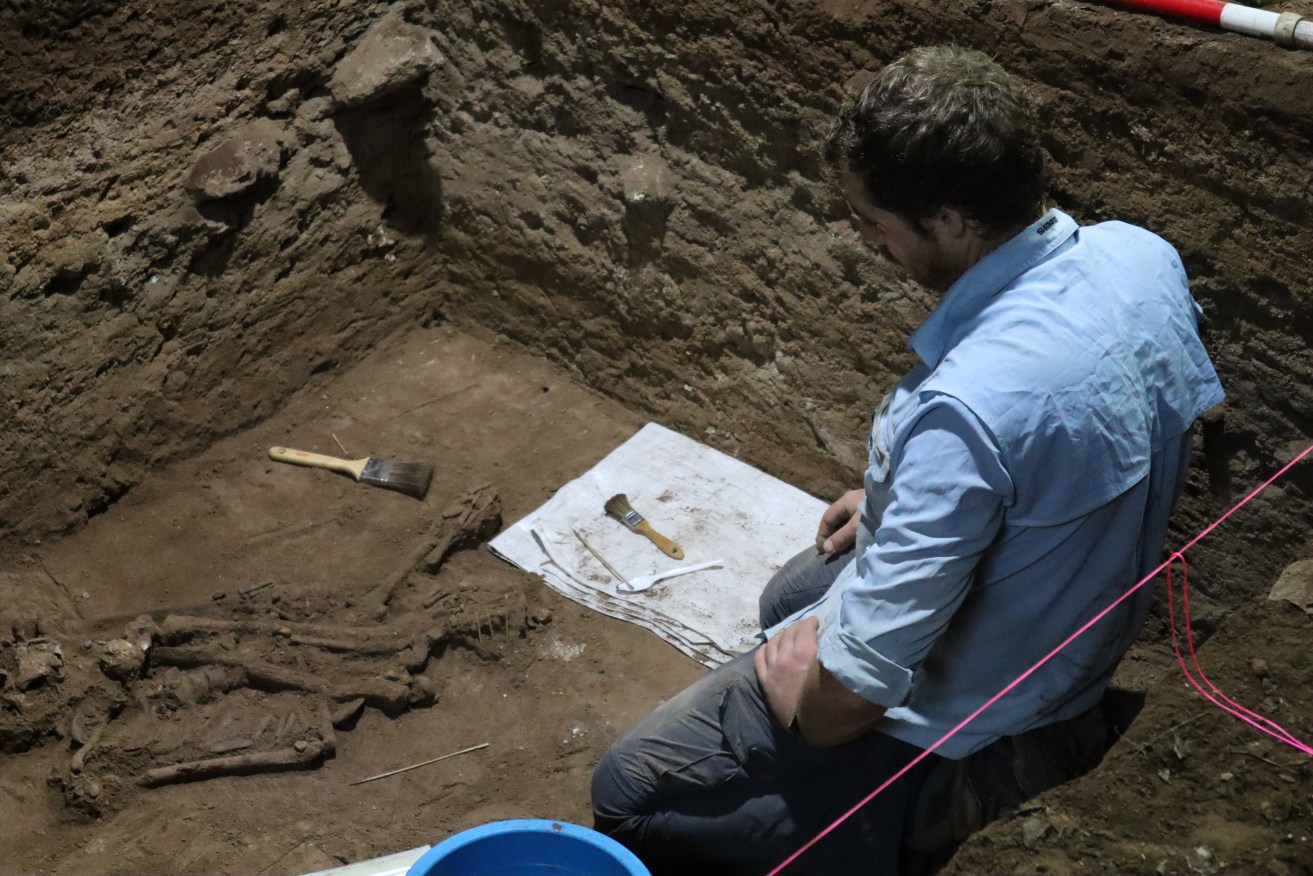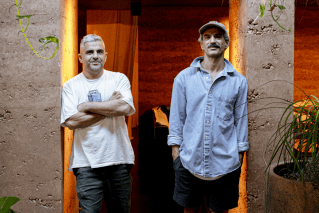Griffith team cuts to the chase with discovery of stone-age surgery
A research team led by Gold Coast archaeologists has discovered the earliest evidence of complicated surgery being carried out by humans, unearthing evidence of an amputation on a child more than 31,000 years ago.


Griffith University's Tim Maloney with the child's skeleton in the Borneo cave. (Image: Supplied)
The team found the skeletal remains of a young hunter-gatherer who had their lower left leg amputated by a skilled prehistoric surgeon.
The discovery of the skeleton in a cave in Borneo is thought to be the earliest known evidence of a “complex medical act”.
It is thousands of years older than any other discovery of stone age “operations”.
Team leader from Griffith, researcher Dr Tim Maloney, said the discovery had major implications for the understanding of the history of medicine.
“The skeleton has preserved evidence that they survived a childhood amputation of their lower left leg, going on to thrive into adulthood as an amputee in the rainforest jungles of Borneo,” Maloney said.
“This is the earliest evidence in human history, about 31,000 years old, of advanced medical and in this case surgical procedures, overturning the known history of human medicine and medical knowledge.
“It’s amazing, it’s still shocking. It’s the beginning of ongoing amazing research in a really strategic area.’
The research, published in the journal Nature today by the combined team from Griffith University, University of Sydney, Southern Cross University, University of Western Australia and Flinders University, shows there was no evidence of infection in the child’s left limb.
The lack of infection further proved the leg was amputated and not an animal attack, such as a crocodile bite, the researchers said.
Maloney said until the discovery, scholars had assumed that humans lacked the expertise and technology to perform difficult procedures like surgical amputation until farming communities and villages transformed human society around 10,000 years ago.
The oldest evidence of humans conducting amputations, before the most recent discovery, was a 7,000-year-old skeleton of an elderly male Stone Age farmer from France, whose left forearm had been carefully amputated just above the elbow.
Before then, it was thought that foraging societies couldn’t do complex surgery, and instead only used plant-based remedies.
“It was thought the shift from foraging to farming at the end of the ice age gave rise to previously unknown health problems that stimulated the first incremental advances in medical technology, including the earliest attempts at stone age ‘surgery’,” Maloney said.
He said the question now remained whether the discovery showed hunter-gatherers in such an early period of human history were generally more medically advanced than ever thought, or if the foraging communities around Borneo 31,000 years ago were unusually advanced.












